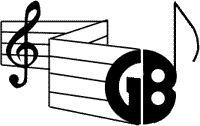"The intriguing part of the composition is how Baxter is able to bring the sounds of modern string quartet sonorities and marry them with a Scottish fiddle overtone. --- hearing the singing qualities of the main theme that has elements of the lyrical Scottish fiddler tradition is excellent. Again, Baxter displays a mastery of form and balance in the combining of old and new in a manner that is beautiful and enriching."
Elberton Cisnero
5fingerreview.com
7 minutes. Intermediate
James MacPherson (1675-1700) was a Scottish outlaw and fiddle player. His story is well known in certain parts of Scotland.
After his father's death he was raised by his mother's family, who were gypsies. He grew to be a man of uncommon strength,
an excellent swordsman and a renowned fiddler. As is so often the case of these type of folk heroes, the story goes that, in spite of his occupation,
no act of cruelty, or robbery of a widow, or of the fatherless, or of the distressed, was ever perpetrated under his command. However, he was betrayed
by a man of his own tribe and a warrant for his arrest went out. After many unsuccessful attempts he was finally captured and put to trial.
He was sentenced to death by hanging in the town of Banff. He composed his Lament the night before the hanging. As 2:30 approached, the time for
the punishment, the people in charge heard that a reprieve was on its way from the Lord of Grant, so they moved the town clock up by 15 minutes and went
forth with the execution. Legend says that MacPherson played his lament at the gallows. After finishing the lament he then broke the fiddle either
over his knee, or over the head of the executioner, depending on which version of the tale you want to believe, then by some accounts flung himself
down so that he hung himself by his own will. MacPherson's sword is on display at the Duff house in Banff. It is written that even to this day the
town of Macduff has its west-facing town clock covered so the people of Banff can't see the correct time!
Robert Burns wrote words to go with the music.
Notes from Garth Baxter:
I found the tune to be remarkably beautiful. My work is completely inspired by MacPherson's Lament.
I have taken melodic ideas from the first two sections of the Lament and used them to build my composition.
But I wanted to end my piece with much of the last phrase from the original work. I did so, but changed the
meters in some measures and extended some motives. Obviously I added the texture of the quartet in contrast to the
solo violin in the original.




